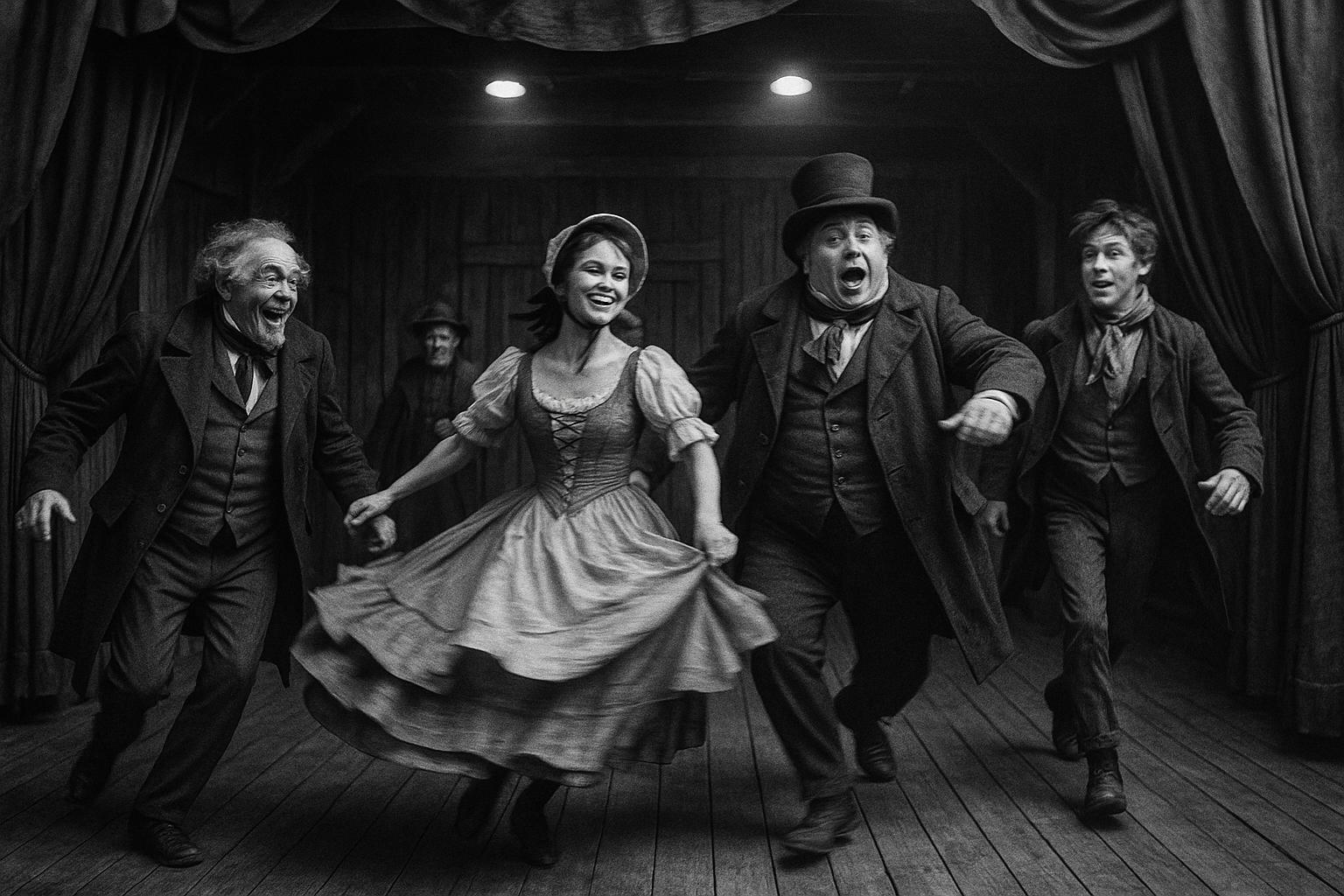Sketches depicting Charles Dickens performing plays for his dinner party guests have been unveiled to the public for the first time, providing a rare and intimate glimpse into the celebrated author’s life beyond his literary achievements. Created in pencil, ink, and watercolour, these expressive drawings capture Dickens staging private theatrical productions in full costume at his London home, Tavistock House. The sketches were made by Nathaniel Powell, an amateur artist and neighbour who lived next door, and illustrate Dickens in animated poses alongside family, friends, and neighbours, often during charity events.
According to Emma Harper, deputy director and curator at the Charles Dickens Museum where the drawings are now displayed, these artworks are “incredibly rare visual records” of Dickens as a performer. She noted that until recently, the museum had relied mostly on newspaper accounts and written recollections, but these sketches vividly bring to life the convivial theatrical evenings Dickens hosted at Tavistock House. The drawings surfaced at a Bonhams auction earlier this year and were acquired by the museum for £9,600, supported by funds from the V&A Purchase Grant Fund, the Art Fund, and the Wilkie Collins Society.
Tavistock House, Dickens’s London residence from 1851 to 1860, is notable not only as the site where he penned several of his most celebrated novels—including Bleak House, Hard Times, Little Dorrit, and A Tale of Two Cities—but also for its transformation into a hub of amateur theatricals. Dickens converted a large schoolroom within the house into a small theatre, where he would stage performances like The Frozen Deep and Mr. Nightingale’s Diary. These productions were collaborative efforts involving friends like fellow writer Wilkie Collins, and were as much an expression of Dickens’s literary creativity as they were social occasions.
The sketches themselves, detailed in the Bonhams auction catalogue, depict scenes from these private theatrical performances, capturing the energy and collaborative spirit of Dickens’s circle. The catalogue further emphasises the significance of the artworks for scholars and collectors alike, given the limited visual documentation of Dickens’s amateur dramatics.
Historical accounts and contemporary narratives paint a vivid picture of Dickens’s domestic and social life at Tavistock House. It was a setting for elaborate dinner parties with multiple courses served French-style, where guests engaged in lively literary discussions. Notably, Dickens’s interactions with Wilkie Collins at these gatherings often centred around their creative collaborations.
The conversion of the schoolroom into a theatre was a considerable undertaking, with stage and scenery created by renowned artists Clarkson Stanfield R.A. and W. Telbin. Images from the period reveal Dickens reading from scripts in this very room, underscoring how closely wired his writing and theatrical pursuits were within the confines of his home.
Beyond the visual and written records, playbills and other documents from performances such as The Merry Wives of Windsor and The Frozen Deep underline the important role amateur theatricals played in Dickens’s life. These ventures not only provided entertainment but also enriched his engagement with storytelling and performance, bridging his public literary career with his private social circle.
Together, the newly acquired sketches and the wider historical context they illuminate offer a uniquely vivid view of one of literature’s great figures. Rather than solely a solitary author at work, Dickens emerges here as a lively performer and a gracious host, whose creative energies animated both the page and the stage within the intimate setting of Tavistock House.
📌 Reference Map:
- Paragraph 1 – [1], [4]
- Paragraph 2 – [1], [2]
- Paragraph 3 – [4], [1], [3]
- Paragraph 4 – [2], [6]
- Paragraph 5 – [3]
- Paragraph 6 – [5], [7]
- Paragraph 7 – [6]
- Paragraph 8 – [1], [4], [3]
Source: Noah Wire Services
